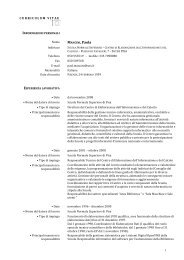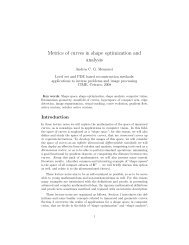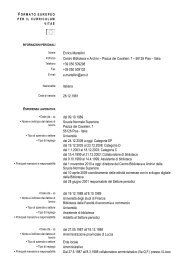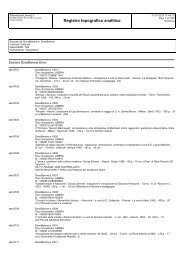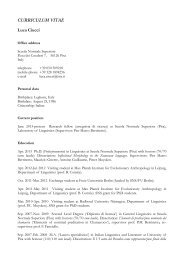Non-conventional uses of the Pluperfect entional uses of the ...
Non-conventional uses of the Pluperfect entional uses of the ...
Non-conventional uses of the Pluperfect entional uses of the ...
Create successful ePaper yourself
Turn your PDF publications into a flip-book with our unique Google optimized e-Paper software.
QUADERNI DEL LABORATORIO DI LINGUISTICA – VOL. 9,2/2010Prototypical structure <strong>of</strong> <strong>the</strong> PPF___________E______R______________S___________[1] a. At 5 o’clock, Peter had already left [explicit R-localization]b. Peter had already left at 5 o’ clock. [implicit R-localization]Although <strong>the</strong> linguistic material is <strong>the</strong> same in both cases, <strong>the</strong> informational contentand its syntactic implementation (not discussed here) are radically different. Thetemporal adverbial at 5 o’clock plays a different role in <strong>the</strong> two sentences. In (a), itfulfills <strong>the</strong> R role, while <strong>the</strong> localization <strong>of</strong> E is left vague. In (b), instead, <strong>the</strong>adverbial explicitly localizes E, while R has to be recovered from <strong>the</strong> precedingcontext. 5 The two sentences are thus symmetric in terms <strong>of</strong> explicitness: (a) makes Rexplicit, while leaving E’s localization vague; in (b) <strong>the</strong> contrary occurs. The doublereading possibility <strong>of</strong> examples such as those in [1] was already noted by Reichenbachin his seminal work, with a slightly different interpretation. But whatever <strong>the</strong>interpretation <strong>of</strong> <strong>the</strong> adverbial (as ei<strong>the</strong>r R or localizer <strong>of</strong> E), it is important to observein this context that <strong>the</strong> aspectual structure <strong>of</strong> <strong>the</strong> PPF is <strong>the</strong> same in both cases.The above structure is also to be found in o<strong>the</strong>r more specific, yet fairly traditional<strong>uses</strong> <strong>of</strong> <strong>the</strong> PPF, like <strong>the</strong> so-called ‘explanatory’ PPF. This is associated with sentencessuch as [2], where <strong>the</strong> natural sequence <strong>of</strong> <strong>the</strong> events is reversed (aniconical order) and<strong>the</strong> second clause provides an explanation for <strong>the</strong> unexpected situation depicted by <strong>the</strong>preceding one. Here <strong>the</strong> first clause plays <strong>the</strong> role <strong>of</strong> R, while E’s localization remainsvague:[2] It was completely dark. Somebody had disconnected <strong>the</strong> electricity.An important fact to be retained from <strong>the</strong> above discussion is that, whenever a PPFis met, <strong>the</strong> hearer/reader starts <strong>the</strong> search for a suitable R in order to saturate thisindispensable structural projection. Should <strong>the</strong> immediately previous context notprovide a viable R, <strong>the</strong> search continues until saturation occurs, for this is strictlyrequired by <strong>the</strong> aspectual nature <strong>of</strong> <strong>the</strong> ordinary PPF. Indeed, an abrupt story’s5The reader can easily construe a plausible context with a little exercise <strong>of</strong> imagination. The tworeadings <strong>of</strong> <strong>the</strong> PPF in [1] were respectively called “perfect-in-<strong>the</strong>-past” and “past-in-<strong>the</strong>-past” byComrie (1976: 56). Although in most languages <strong>the</strong>y are conveyed by one and <strong>the</strong> same form, Squartini(1999) has shown that this is not always <strong>the</strong> case, with examples from Portuguese and Zürich German.4



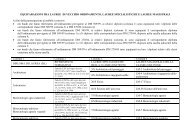
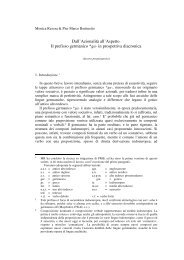
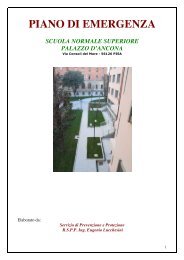
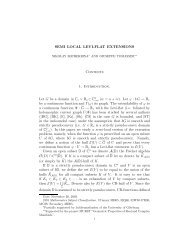
![4. Ghost [Å] vowels in French - Laboratorio di Linguistica](https://img.yumpu.com/49999334/1/184x260/4-ghost-a-vowels-in-french-laboratorio-di-linguistica.jpg?quality=85)



